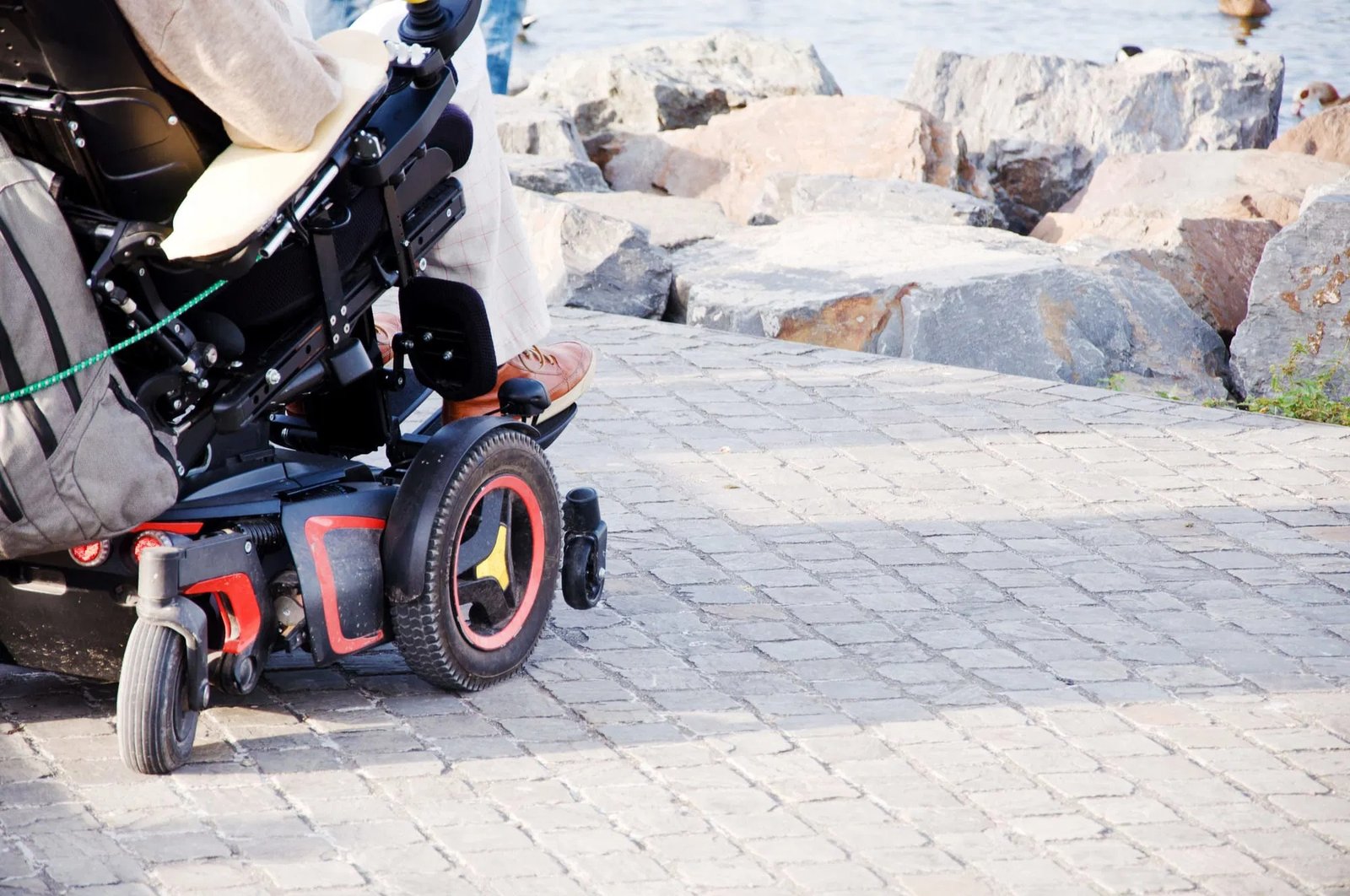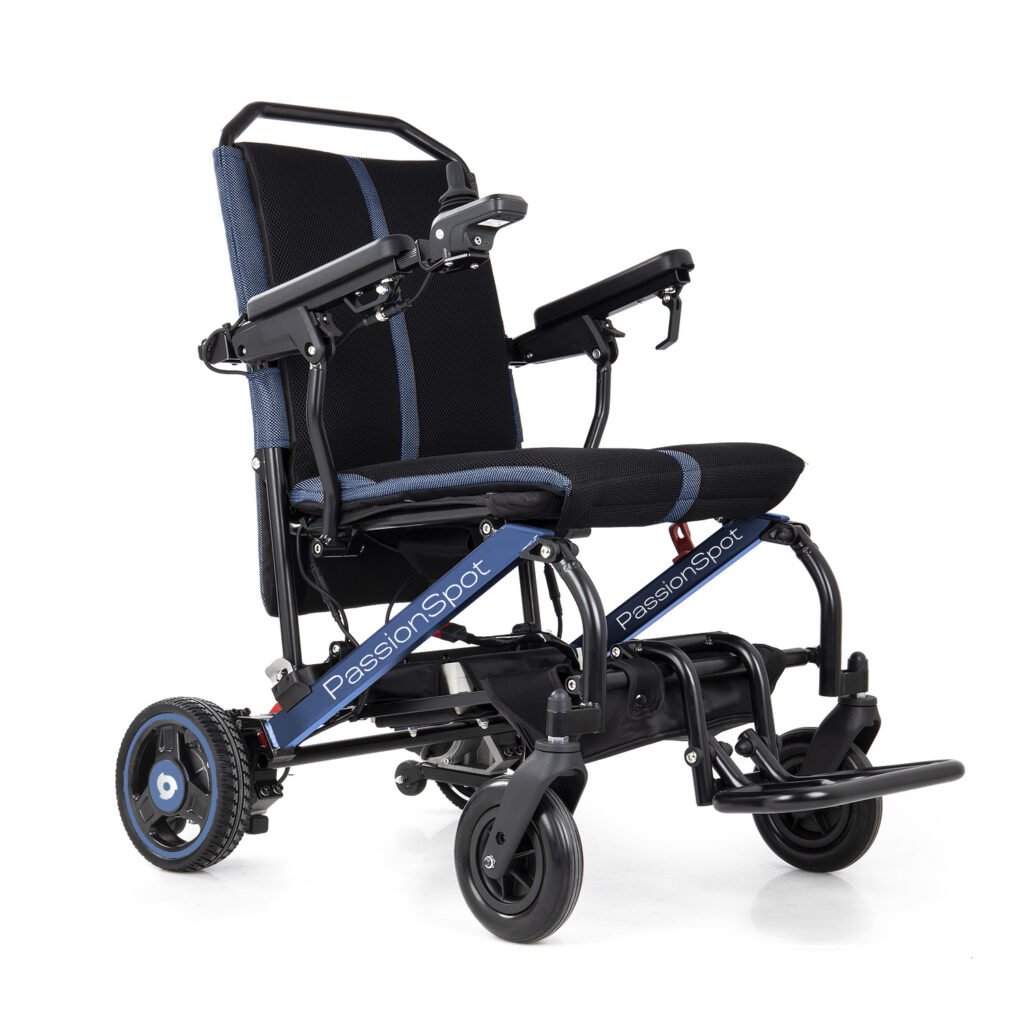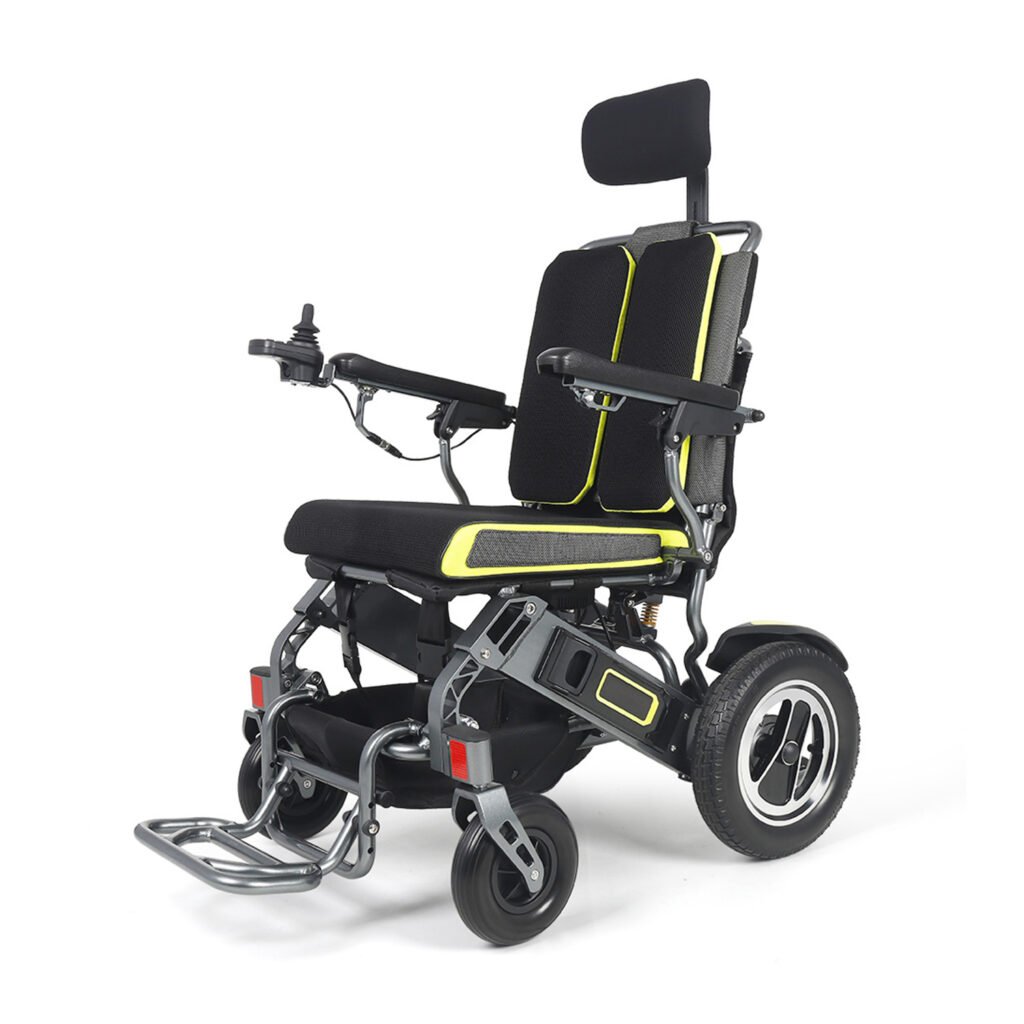
Why Are Power Wheelchairs So Expensive?
If you’ve ever shopped for a power wheelchair for sale, you’ve likely experienced sticker shock. With prices ranging from $2,000 for basic models to over $30,000 for advanced systems, many consumers wonder why these mobility devices command such high prices. The answer lies in a complex combination of advanced engineering, specialized manufacturing, regulatory compliance, and market dynamics that make power wheelchairs far more sophisticated than they might initially appear.
Understanding the factors that drive power wheelchair price structures helps consumers make informed decisions and find the best value for their investment. This comprehensive analysis breaks down every cost component, from raw materials to research and development, while providing practical strategies for finding quality motorized wheelchair for sale options at more affordable prices.
Power Wheelchairs
Power wheelchairs represent some of the most sophisticated personal mobility devices ever created, incorporating technology that rivals automotive systems in complexity while meeting far more stringent safety and reliability requirements. The heart of any electric wheelchair is its motor and drive system, which must provide reliable, precise control under demanding conditions. Unlike simple electric motors, wheelchair drive systems incorporate brushless motor technology for extended lifespan and quiet operation, sophisticated gear reduction systems that multiply torque while maintaining efficiency, and electronic speed controllers with multiple safety systems and programmable parameters.
These systems also feature regenerative braking that recovers energy during deceleration and environmental sealing to protect against moisture, dust, and temperature extremes. The engineering precision required means these systems must operate reliably for thousands of hours while supporting users weighing up to 450 pounds or more, driving significant costs that are invisible to consumers but critical for safe, reliable operation. Modern power wheelchairs feature computer-controlled systems that manage every aspect of operation, including microprocessor-controlled drive units with multiple safety protocols, programmable speed and acceleration profiles for different users and environments, and diagnostic systems that monitor performance and predict maintenance needs.
The software development alone for these systems costs millions of dollars and requires ongoing updates and refinements. Each wheelchair essentially contains a specialized computer system designed specifically for mobility applications, with integration capabilities for environmental controls, communication devices, and medical equipment. Safety systems automatically adjust performance based on terrain and conditions, representing years of development work by teams of engineers and programmers who must account for countless variables in real-world usage scenarios.

Mobility Shop
Unlike mass-produced consumer goods, power wheelchairs are manufactured in relatively small quantities using specialized processes that drive higher per-unit costs. The global power wheelchair market serves approximately 3.6 million users worldwide, a tiny fraction compared to automotive or consumer electronics markets, meaning manufacturers cannot achieve the economies of scale that drive down costs in other industries. Each wheelchair frame requires precision welding by certified technicians, individual quality control testing, custom fitting and adjustment for different user needs, and hand assembly of complex electronic and mechanical systems.
Power wheelchairs utilize aerospace-grade materials and components designed for exceptional durability and reliability, including aircraft-grade aluminum alloys for lightweight strength, medical-grade plastics and fabrics that resist wear and bacterial growth, precision bearings and mechanical components rated for extended use, and weather-resistant electronic components that function in extreme conditions. These premium materials cost significantly more than standard alternatives but are necessary for wheelchairs that must operate reliably for 5-10 years or more in challenging environments.
Every power wheelchair undergoes extensive testing that includes fatigue testing equivalent to years of typical use, environmental testing for temperature, humidity, and water resistance, electromagnetic compatibility testing to prevent interference with other devices, and safety testing that exceeds automotive standards for similar components. This comprehensive testing adds substantial time and cost to the manufacturing process but ensures wheelchairs meet the reliability standards users depend on for daily mobility. Quality control processes also include individual inspection of welds, electronic system validation, battery performance verification, and final assembly testing that can take several days per unit.
For a detailed comparison of how these factors affect pricing across different models, explore our comprehensive Electric Wheelchair Cost Comparison guide.
Mobility Power Wheelchairs
Power wheelchairs are classified as Class II medical devices by the FDA and must comply with extensive regulations that add significant development and manufacturing costs. The regulatory framework requires clinical testing to demonstrate safety and effectiveness, quality management system compliance with ISO 13485 standards, regular facility inspections and comprehensive documentation requirements, and post-market surveillance with adverse event reporting systems. These regulatory requirements necessitate extensive documentation, testing, and compliance systems that smaller manufacturers often cannot afford, contributing to market concentration and higher prices.
International compliance adds another layer of complexity, as power wheelchairs sold globally must meet multiple international standards including the ISO 7176 series for wheelchair safety and performance, IEC 60601 for medical electrical equipment safety, FCC regulations for electromagnetic compatibility, and various national standards for different markets. Achieving compliance with these standards requires extensive testing, documentation, and often design modifications for different markets, all of which increase development costs significantly. Manufacturers must also maintain detailed records of every component, conduct regular audits of their quality systems, and provide extensive training for their personnel to ensure ongoing compliance.
The medical device classification also requires manufacturers to implement comprehensive risk management systems, maintain detailed technical files for each product, and establish formal design controls that govern every aspect of product development. These systems, while essential for ensuring user safety, require significant investment in personnel, systems, and processes that ultimately contribute to higher product costs.

Advanced Technology Development and Innovation Costs
The power wheelchair industry invests heavily in research and development to improve safety, performance, and user experience, with these costs ultimately reflected in product pricing. Modern power wheelchairs benefit from significant investment in battery technology, including lithium-ion systems that provide longer range and faster charging, advanced battery management systems that optimize performance and safety, integration with smart charging systems and energy recovery, and development of modular battery systems for different range requirements. The transition from traditional lead-acid batteries to lithium-ion technology alone represents millions of dollars in research and development investment across the industry.
Contemporary wheelchairs incorporate sophisticated smart technology including smartphone connectivity and remote monitoring capabilities, GPS tracking and navigation assistance, obstacle detection and collision avoidance systems, and integration with home automation and environmental control systems. These features require extensive software development, testing in real-world conditions, and ongoing updates and support that represent substantial ongoing costs. The development of user interfaces that are accessible to individuals with varying levels of physical ability and cognitive function requires specialized expertise and extensive user testing that adds significantly to development costs.
Advanced seating systems represent another major area of engineering investment, encompassing pressure-relieving cushion technologies that prevent skin breakdown, power positioning systems including tilt, recline, and elevating leg rests, custom molded seating for specialized medical needs, and integration of medical monitoring and therapy devices. The biomechanical research required to develop effective seating systems involves collaboration with medical professionals, extensive clinical testing, and ongoing refinement based on user feedback and medical advances.
Understanding automatic wheelchair price structures reveals the cutting-edge technology required for autonomous or semi-autonomous operation. These advanced systems incorporate sensor technology including LiDAR and camera systems for obstacle detection, ultrasonic sensors for precise navigation in tight spaces, accelerometers and gyroscopes for stability and orientation, and GPS systems for outdoor navigation and location tracking. The artificial intelligence and machine learning components include path planning algorithms that optimize routes and avoid obstacles, learning systems that adapt to user preferences and habits, predictive maintenance systems that anticipate service needs, and safety systems that respond to emergency situations.
Specialized Market Dynamics and Distribution Costs
The specialized nature of the power wheelchair market creates unique cost pressures that don’t exist in mass consumer markets. Power wheelchairs require specialized sales and service networks with certified rehabilitation specialists for proper fitting and setup, ongoing technical support and maintenance services, parts inventory and service capabilities in local markets, and comprehensive training programs for dealers and service technicians. Each wheelchair requires individual customization including professional assessment and measurement by trained specialists, custom programming of control systems for individual needs, seating modifications and positioning adjustments, and integration with other mobility aids and medical devices.
The limited market size and specialized requirements create high barriers to entry due to regulatory requirements and development costs, specialized manufacturing capabilities that are not easily replicated, a limited number of qualified manufacturers worldwide, and concentration of market share among few major players. These factors limit competition and maintain higher price levels compared to mass market products. The specialized distribution network also requires significant investment in training, inventory, and service capabilities that add to the overall cost structure.
Insurance and reimbursement dynamics significantly influence pricing, with Medicare’s reimbursement structure creating unique market dynamics through standardized reimbursement rates that don’t necessarily reflect actual costs, complex documentation requirements that increase administrative costs, limited coverage for premium features creating a two-tiered market, and regional variations in coverage and reimbursement levels. Medicare’s competitive bidding program for durable medical equipment affects pricing by requiring suppliers to bid for contracts at potentially unprofitable prices, potentially compromising quality and service as suppliers cut costs to remain competitive, stifling innovation through pressure to reduce prices, and causing market consolidation as smaller suppliers exit the market.
Quality, Reliability, and Long-Term Value Considerations
Power wheelchair users depend on their equipment for daily mobility, making reliability and quality critical factors that justify higher costs. Quality wheelchairs undergo testing that simulates years of use, including fatigue testing with millions of cycles on critical components, environmental testing in extreme temperature and humidity conditions, drop testing and impact resistance validation, and long-term reliability studies with actual users. This extensive testing regime ensures that wheelchairs can withstand the demands of daily use while maintaining safety and performance standards.
Manufacturers must maintain extensive support infrastructures including parts inventory and distribution systems that ensure replacement components are available when needed, technical training for service personnel across their dealer networks, customer support and troubleshooting resources available to users, and warranty and repair services nationwide. The cost of maintaining this support infrastructure is substantial but essential for ensuring users can maintain their mobility independence. Medical device manufacturers also face significant liability exposure requiring comprehensive insurance coverage for potential product defects, legal compliance and documentation requirements, risk management and quality assurance programs, and recall capabilities with post-market surveillance systems.
For detailed pricing information on lightweight and portable solutions, consult our comprehensive How Much Does a Lightweight Wheelchair Cost guide, which covers various models and cost factors across different manufacturers.
The engineering required to create a lightweight folding wheelchair that maintains durability and performance adds significant complexity and cost through advanced materials engineering including carbon fiber composites that provide strength while minimizing weight, titanium components for critical stress points, advanced aluminum alloys with superior strength-to-weight ratios, and precision manufacturing techniques that maximize material efficiency. Complex folding mechanisms must be engineered to fold compactly while maintaining structural integrity, incorporate quick-release mechanisms that operate smoothly after thousands of cycles, include safety systems that prevent accidental folding during use, and integrate electrical systems that must disconnect and reconnect reliably.
Finding Value in the Competitive Marketplace
Despite high typical prices, consumers can find discount electric wheelchairs through various strategies that don’t compromise quality. Manufacturers introduce new models annually, creating opportunities for significant savings through end-of-model-year clearances where previous year models with identical functionality are offered at reduced prices, demonstration models that have minimal use but substantial discounts, and overstock situations where retailers need to clear inventory quickly. These opportunities can provide savings of 20-40% while still offering full manufacturer warranties and support.
Quality used and certified pre-owned wheelchairs can provide excellent value through professional reconditioning that restores like-new performance, comprehensive warranties that protect against defects, savings of 30-50% compared to new equipment prices, and access to premium models that might otherwise be unaffordable. Some organizations offer group purchasing opportunities including healthcare systems that negotiate volume discounts, disability organizations that coordinate group purchases, family purchases that combine multiple wheelchair needs, and employer programs that provide mobility benefits.
When evaluating motorized wheelchair for sale options, understanding the relationship between price and features helps identify the best value across different price ranges. Entry-level power wheelchairs priced between $2,000-$5,000 typically offer basic rear-wheel or front-wheel drive systems, standard seating with limited adjustability, simple joystick controls with basic programming, and adequate performance for indoor use and basic outdoor terrain. Mid-range power wheelchairs in the $5,000-$15,000 range feature mid-wheel drive systems with superior maneuverability, enhanced seating with some power positioning options, advanced control systems with multiple programming options, and better outdoor performance with longer battery life. Premium power wheelchairs ranging from $15,000-$30,000 and above offer sophisticated drive systems with advanced suspension, comprehensive power seating and positioning systems, smart technology integration and connectivity features, and all-terrain capabilities with extended range options.
Strategic Purchasing and Cost Management
Several strategies can help manage power wheelchair costs while ensuring access to quality mobility equipment. Maximizing insurance benefits requires understanding coverage options including Medicare Part B which covers 80% of approved wheelchair costs, private insurance that often provides better coverage for premium features, supplemental insurance that can cover gaps in primary coverage, and flexible spending accounts that can reduce effective costs through tax savings. Strategic timing can result in significant savings through end-of-year clearances when retailers need to clear inventory, new model introductions that reduce prices on previous versions, seasonal sales during traditional shopping periods, and insurance benefit renewal periods when coverage is maximum.
Various organizations provide funding assistance including non-profit organizations that provide grants for mobility equipment, veteran’s benefits for service-related mobility needs, state vocational rehabilitation programs, and employer accommodations and benefit programs. Understanding the total cost of ownership requires looking beyond initial purchase price to consider maintenance and repair costs, with quality wheelchairs typically requiring less maintenance and having lower repair costs due to premium components that last longer and require less frequent replacement, better build quality that prevents common failure modes, more efficient service networks that reduce downtime and costs, and comprehensive warranties that cover major repairs.
For comprehensive answers to common questions about power wheelchair costs, financing options, and insurance coverage, visit our detailed Power Wheelchair FAQs: Everything You Need to Know (2025 Guide).
Future Trends and Market Evolution
Several trends suggest potential changes in power wheelchair pricing and accessibility in coming years. As technologies mature, costs typically decrease through mass production of electronic components that reduces per-unit costs, standardization of interfaces and systems that improves efficiency, competition in component markets that drives prices down, and manufacturing automation that reduces labor costs. Growing awareness and market size may increase competition through an aging population increasing demand for mobility solutions, new manufacturers entering the market with innovative approaches, direct-to-consumer sales models that reduce distribution costs, and international competition that provides more options for consumers.
Policy changes could affect accessibility and costs through expanded insurance coverage for mobility equipment, streamlined approval processes for new technologies, international trade agreements that reduce component costs, and standards harmonization that reduces compliance costs. The integration of artificial intelligence, Internet of Things connectivity, and advanced materials science continues to drive innovation while potentially creating new cost pressures and opportunities for value enhancement.
Making Informed Investment Decisions
Understanding why power wheelchairs are expensive helps consumers make informed decisions about their mobility investments. Successful wheelchair selection requires honest assessment of current and anticipated future mobility needs, daily usage patterns and environmental requirements, physical capabilities and limitations, and budget constraints and financing options. The best wheelchair decisions consider total value including quality and reliability of construction and components, comprehensive warranty and service support, expected useful life and maintenance requirements, and features and capabilities that enhance independence and quality of life.
Professional guidance ensures optimal outcomes through certified rehabilitation specialists who understand medical needs, occupational therapists who can assess functional requirements, insurance specialists who maximize coverage and benefits, and service technicians who provide ongoing support and maintenance. Working with qualified professionals helps ensure that the significant investment in a power wheelchair results in improved mobility, independence, and quality of life for years to come.
